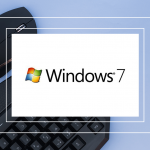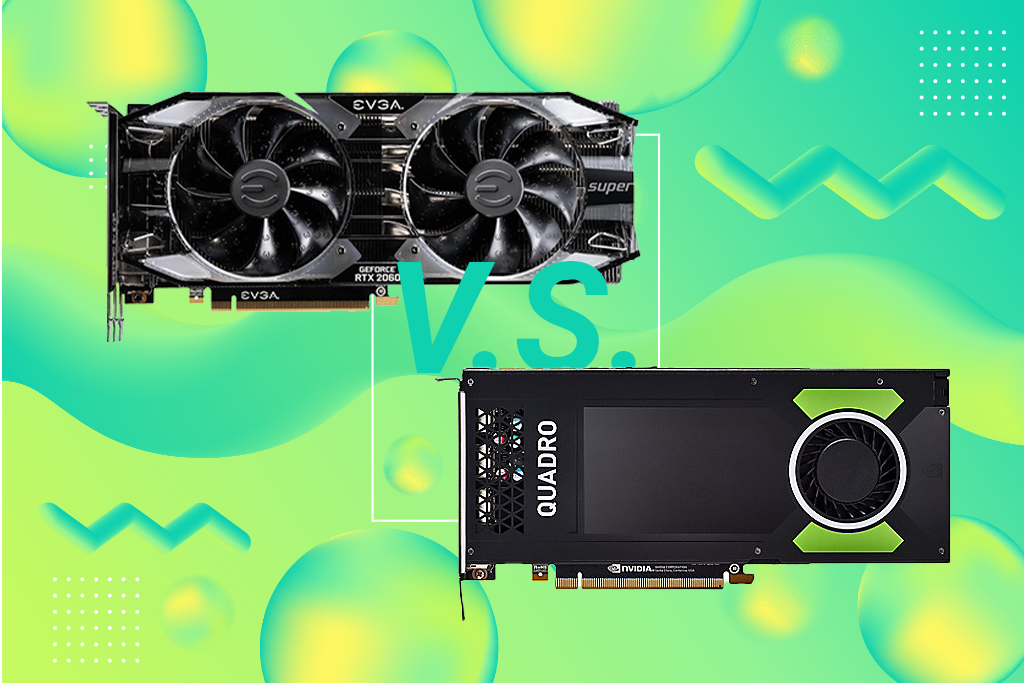GeForce vs Quadro: What’s the Difference?

There’s a lot to keep up with technology-wise these days. It’s no surprise that the average person may not have the time to do a deep dive into every technological breakthrough, even if it’s something that could have a direct impact on their day-to-day workflow.
For instance, you may be aware of NVIDIA’s two most popular GPU product families: GeForce and Quadro. You may even know that GeForce cards are mostly designed for the general consumer space, while Quadro cards are meant for professional workloads. But you may not know some of the technical details behind why the cards are segmented this way.
When Quadro was first introduced, it was specifically aimed at accelerating professional workloads, particularly in CAD, and that remains true today. GeForce, meanwhile, is largely marketed toward gamers and is also great at creating seamless virtual reality experiences via VirtualLink, which combines power, video and data feed into a single USB-C cable.
Speaking of, both GeForce RTX and Quadro RTX cards have USB-C ports.1 These are mainly intended to charge your phone, connect an external drive, headphones, or power virtual reality headsets. However, Quadro has an extra feature: the ability to disable that USB-C port. It may seem strange at first, but for organizations where data security is vitally important, this is hard to do without, especially when you have fleets of computers scattered across multiple locations, or simply want to protect your company’s data.
Then there’s VRAM, which is a GPU’s onboard memory. The highest-end GeForce card, the Titan RTX, has 24GB of VRAM. Meanwhile, the Quadro RTX 8000 blows it away by having a massive 48GB of ECC, or error-correcting code memory, which automatically fixes many common data errors. That much fancy VRAM comes at a higher cost, sure, but it’s worth it if you’re running serious workloads like a GPU rendering farm, visualizing weather patterns, or training deep neural networks, tasks that are always hungry for VRAM. Sync cards are another benefit absent from GeForce, which allows you to run a large number of synchronized displays off a single card, which is needed in things like flight simulators.
Additionally, some Quadro (and some GeForce) cards have the ability to add an NVLink bridge, a high-speed interconnect that literally and figuratively links two cards together which allows for faster communication between them via a mesh network that eschews the old master/slave relationship of SLI. Most importantly, using this bridge on two Quadro cards combines the VRAM of both GPUs into a single resource that can, for example, be used in rendering to tackle much larger, complex scenes. However, it’s important to note that NVLink functionality is highly dependent on the application, and is sometimes not actually beneficial. While its usefulness is currently very limited, more software developers may choose to support it in the future.
Another important distinction is that every single Quadro card is manufactured internally by NVIDIA, whereas GeForce cards are often built and sold by third-party vendors. NVIDIA keeping the Quadro cards isolated in this way ensures a consistent level of quality, which is important to businesses that are always looking for a stable, long-term solution. In that vein, Quadro cards also offer longer warranties, enhanced IT management capabilities, and even come with drivers that are designed with longevity in mind. Basically, they come with all the features you’d want in a professional environment.
Since BOXX caters to creative professionals looking to accelerate their workflows and maximize ROI, we often recommend Quadro RTX cards because they do things like significantly shorten render times in software like OctaneRender, boost photorealism while working on scenes in Autodesk Maya, and create a more fluid viewport experience in SOLIDWORKS. These are differences that not only make your life easier but allow you to finish projects sooner, which affects your bottom line.
BOXX products range from the ultra-compact APEXX S1 all the way to the massive 8-GPU rack-mounted monster that is the RAXX W4G, and each one is designed to house at least one Quadro (or GeForce) card. Check our website or consult with a BOXX performance specialist to learn more.






